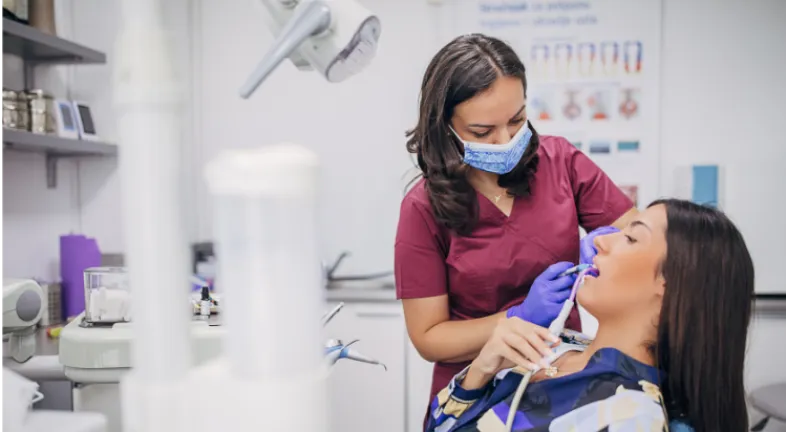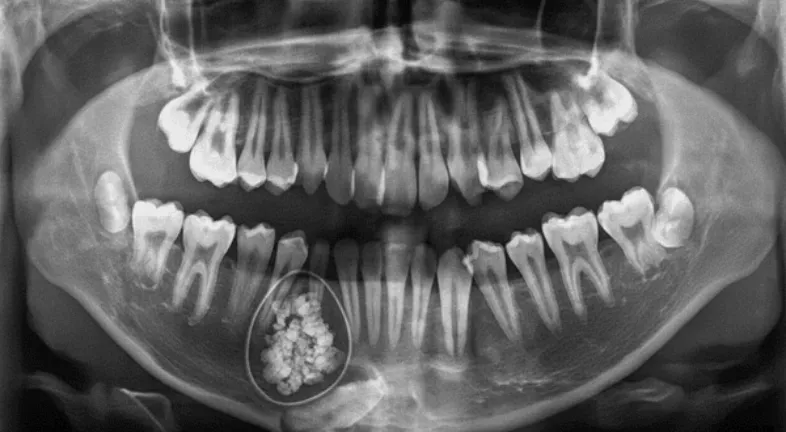
Table of Contents
Thinking about getting a teeth straightening treatment but confused between choosing at-home teeth straightening or going to the orthodontist? Each option has its advantages, but the final decision depends on your requirements, lifestyle, and budget. In this blog post, we’ll discuss these two teeth straightening methods so you can choose which course of action will help you have the smile of your dreams without the need for further adjustments. Let’s dig in!
Mail-order or at-home teeth aligners are clear plastic trays that have been specially designed to gradually move teeth to their correct position. The key benefit is convenience. One of the biggest advantages of at-home aligners is that the patient does not need to have multiple check-ups at the orthodontist’s office.
These aligners make use of your dental impressions or 3D scans of the teeth, which you can acquire in the comfort of your home. Once these impressions are sent back to the company, they formulate a treatment plan and simply deliver your aligners right to your front door. It is also suggested that you should wear the aligners for 20 to 22 hours daily and remove them only while eating or blasting.

Clear aligners worn at home are cheaper than normal braces and, hence, are economically a better choice for the masses. Nevertheless, they are deemed appropriate for mild to moderate alignment problems; therefore, they cannot really be useful when people have severe issues with dental malocclusions or have complex treatment cases.
Visiting an orthodontist for your teeth straightening simply means having your treatment supervised by a professional. Orthodontists have several options, including ordinary metal braces and the cosmetic invisible braces known as Invisalign. With such skills, they are in a better position to handle and treat various dental problems ranging from minor misalignment to extreme crowding.
The orthodontist will examine your teeth, take pictures, and develop a treatment plan for you. As opposed to clear aligners worn at home, you will have the orthodontist examine your case frequently and make some changes to achieve the best result. This oversight can be especially helpful if your dental problems are complicated and your case is complex.
Deciding whether to undergo dental treatment at home or visit an orthodontist’s office is not easy. However, the following guide can help you in decide which of the options suits you the best.

One of the most important factors in determining the right choice is the severity of dental misalignment. While it is safe to say that at-home aligner treatments are ideal for minimal to moderately complex cases, such as slight spacing or minor crowding. If you have serious crowding or if you are suffering from bite issues such as overbites, underbites, or any type of severe malocclusion, it is likely that the appliances need to be monitored by an orthodontist.
Since orthodontists have all the knowledge, skills, and equipment that is needed to treat such cases, they can handle severe cases better than clear aligners.
At-home aligners are known to deliver more relief in a relatively small amount of time for those suffering from mild dental problems. Due to the nature of these treatment programs to deal with simple misalignment problems, the average contact time could take between 6 to 12 months.
On the other hand, the treatments provided by the orthodontist may take more time but are more effective. It can take between 12 to 24 months or even more if you have serious dental problems using traditional braces, which are controlled by an orthodontist.
Therefore, if you want a fast and simple solution and your dental issues are moderate, at-home aligners are a good place to start. However, for those willing to embrace a more comprehensive experience, visits to an orthodontist offer lifetime guarantees.
Cost is inevitably a critical parameter for many individuals considering their orthodontic treatment. In general, at-home aligners are more cost-effective compared to in-office treatments. However, a majority of the at-home aligner manufacturers allow customers to apply for financing, which ultimately enhances the affordability of the price offered.
The cost of at-home aligners is overall somewhere between £1,500 and £2,500, depending on the provider. In contrast, the number of visits to the orthodontist usually costs a little more than the standard dental visits. The price for traditional braces provided in an office setting may range from £3,000 to £8,000 or more, depending on the treatment plan and the location.
But if budget restrictions are your biggest concern and your alignment issues are not quite complicated, at-home aligners are better. However, if you are ready to go the extra mile in getting treated by a specialist, an orthodontist might just be what your teeth need.
Read our detailed guide on Affordable Clear Aligner Options in the UK.

Lastly, deciding between at-home teeth straightening and orthodontist visits comes down to your specific needs and preferences. We are giving you a quick summary to help you make a decision that is best for you:
Clear aligners provide you with the flexibility of managing your treatment plan at home. Although you’ll be able to speak with customer support and maybe have digital check-ins, these firms won’t be able to physically view your dental condition as in the case of in-office treatments. However, this also means that, as a patient, you can monitor your treatment progress and discuss the treatment with the providers regularly.
On the other hand, orthodontists offer physical appointments that are more personalized and require in-person presence. There are several Invisalign teeth straightening options in the UK. During your regular check-ups, your orthodontist will be able to see how your teeth are responding and fix problems as they appear. If your teeth are not getting aligned as per the schedule, then they can adjust the treatment plan to ensure that everything goes as planned.
Such a level of supervision means that your treatment plan is personalized from the beginning to the end, which is more suitable for patients with complicated dental problems.
After you’ve completed your treatment, keeping your teeth in their new positions is just as important as getting them aligned in the first place. Here’s how post-treatment care differs between at-home aligners and orthodontist-supervised treatments.
Once you’re done with your aligners, most at-home companies will provide you with a retainer to wear. The importance of wearing this retainer as prescribed is to avoid having your teeth move back to their previous position. However, the effectiveness of this treatment depends on your consistency and compliance.
Moreover, in the case of at-home treatments, you will have to take additional responsibility for wearing your retainer as well as guaranteeing your outcome.
When your treatment is supervised by an orthodontist, post-treatment care is a bit more hands-on. Your orthodontist will suggest a custom retainer and may even schedule follow-up visits to ensure your teeth are staying in place. If anything seems off, they can adjust the retainer or offer additional guidance.
This ongoing support helps ensure that your teeth stay perfectly aligned for the long haul, giving you extra peace of mind after completing your treatment.
Therefore, when it comes to choosing between at-home teeth aligners and orthodontist visits, one has to make the decision based on the outcome they want and the recommendation from the dentist. For individuals who need a budget-friendly orthodontic treatment and are restricted by limited time, at-home aligners appear as the ideal solution for candidates with mild alignment problems. On the other hand, if your case is complicated or you would want to be supervised through the process, then an orthodontist is the best place to go.





Curated the best for your knowledge
.webp) Tooth Resorption: Causes, Symptoms, and Treatment Options
Tooth Resorption: Causes, Symptoms, and Treatment OptionsTooth resorption often goes unnoticed until real damage appears. Many people discover it during a routine dental visit and feel a wave of fear, wondering how such a hidden process could silently weaken their smile. The truth is that tooth resorption is more common than most expect, and early detection can make all the difference. By understanding why it happens, how it progresses, and which treatments actually work, you can protect your teeth with confidence. You don’t have to feel overwhelmed. When you know what to look for, you stay one step ahead and safeguard your long-term oral health.
Read More Teeth Troubles Explained: Causes, Symptoms & Fixes
Teeth Troubles Explained: Causes, Symptoms & Fixes Teeth problems happen when we take our pearly whites for granted. When our smile is nice and healthy, we don’t think much about it. And the moment things go south, we panic. Saving, or remaking, that smile becomes a priority. For some, though, the issues are present right from the start. Misalignment, bite issues, and teeth troubles that are more “structural” in nature. They don’t happen due to neglect; rather, they are given by luck, God, nature, whatever you believe in. That being said, no matter the type of tooth trouble, there’s a solution out there. And we’re exploring all that today, teeth diseases and treatment, one by one.
Read More Odontomas: What They Are and How They're Treated
Odontomas: What They Are and How They're TreatedSome dental conditions are quiet. Too quiet, in fact. Odontomas fall into that category. They rarely make noise, yet they change things beneath the surface. And people usually have no idea about them. While malocclusions, teeth shifting, discoloration, or other cosmetic dental issues are fairly well known, odontomas are not. So, an odontoma is technically a type of tooth tumor. It’s benign, harmless, but oddly structured. Hence, it can interfere with tooth eruption, displace teeth, or cause swelling. However, there’s more to it. Here’s a deeper dive.
Read MoreQuick Links

Heading